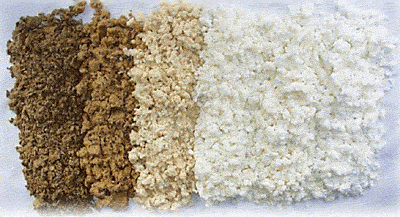Latest ClO2 Bleaching Approaches, Issues to Be Explored at 2013 PEERS Conference
 Print this article | Send to Colleague Print this article | Send to Colleague
 The 2013 TAPPI PEERS Conference in Green Bay, Wis., USA, September 15-18, focuses on advances and emerging developments in the kraft pulping and bleaching arena as well as the chemical recovery island. In the pulp bleaching area, Session 8 on Monday, September 16, explores the global industry's latest approaches to chlorine dioxide bleaching. The 2013 TAPPI PEERS Conference in Green Bay, Wis., USA, September 15-18, focuses on advances and emerging developments in the kraft pulping and bleaching arena as well as the chemical recovery island. In the pulp bleaching area, Session 8 on Monday, September 16, explores the global industry's latest approaches to chlorine dioxide bleaching.
In the first paper of Session 8, James Goldman of Metso examines the spirited debate about whether or not D0 brightness should even be measured for bleach plant control or stage performance evaluation. In the past, many mills have measured and used it to adjust ClO2 dosage, while other mills do not see any value in using this measurement. The D0 and Eop stages perform together in that the D0 stage oxidizes the lignin using ClO2, but then the Eop stage dissolves the oxidized lignin by adding caustic. For this reason, many mills do not measure brightness or kappa until after the Eop stage. In his presentation, Goldman examines data from this measurement and shows how it correlates to the pre-D0 measurements and the post-Eop measurements. It evaluates how this compares relative to the bleaching sequence.
Goldman's presentation is followed by a paper on the "Relationships of Post-Extracted Kappa Number to Brightness for Softwoods Pulps Treated by ECF Bleaching Sequences" by Brian Brogdon of FutureBridge Consulting & Training. As Brogdon explains, post-extracted kappa number and brightness are used by bleach plant operators to gauge chemical demands in subsequent brightening stages of ECF Sequences. These parameters are also employed in steady-state models of bleach plants to predict chemical consumption. In these models, extracted kappa number is the measured performance parameter for bleaching delignification, whereas brightness is the corresponding monitored quantity for brightening stages.
Brogdon also presents the third paper of Session 8, focusing on "Generalized Steady-State Stoichiometric Models for ClO2 Brightening Stages for Softwood Kraft Pulps." In this presentation, Brogdon proposes generalized steady-state models to predict chlorine dioxide consumption in the first (D1) and final (D2) brightening stages for softwoods treated by ECF sequences. The techniques used to develop these stoichiometric models are based on successful models developed earlier to predict bleach uptake during pre-bleaching (i.e., bleaching delignification).
Other sessions at 2013 PEERS examine several additional breakthrough enhancements to chemical pulp bleaching, including oxygen and ozone reinforced bleaching technologies. These and other subjects covered at PEERS will be examined in subsequent issues of Over the Wire.
More information on the 2013 PEERS Conference, and more information on the International Bioenergy and Bioproducts Conference being held September 18-20 in conjunction with PEERS are available online.
|
|

